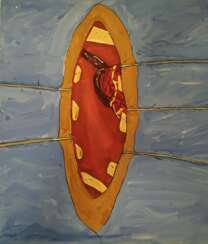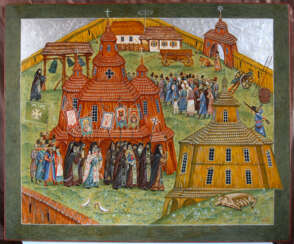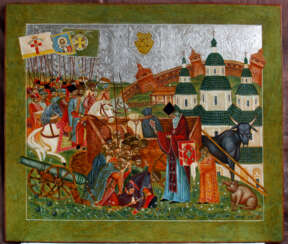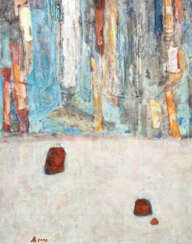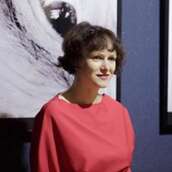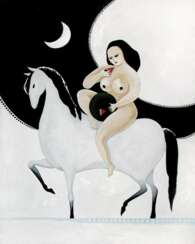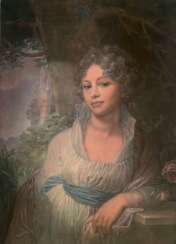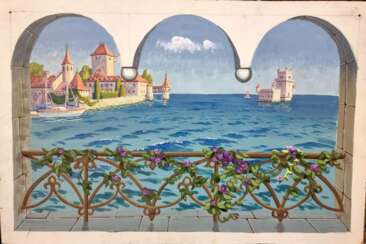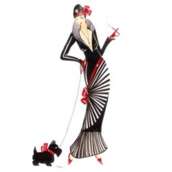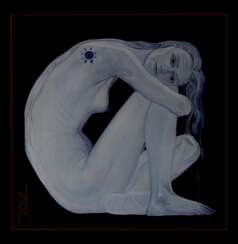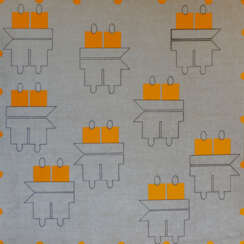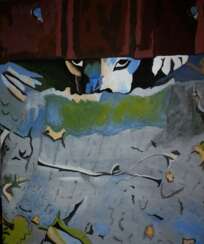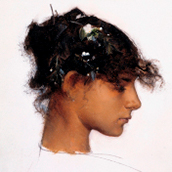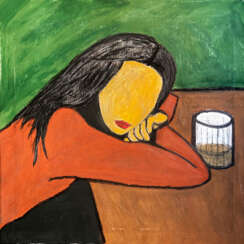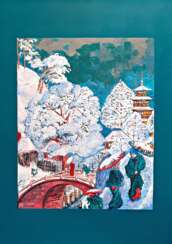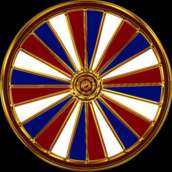344 Items by auctions and galleries:
картина темперой
Картина "Грейпфрут изобилия"
Tatiana Iurasova (b. 1983) 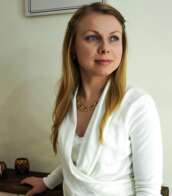 Shop Iurasova Tatiana
Shop Iurasova Tatiana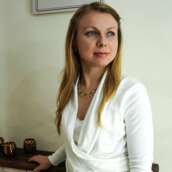

Tatiana Iurasova
19.06.1983
Russia
Меня зовут Татьяна Юрасова, я художник и создатель прекрасного. Я родом из Самары, выросла в этом городе. Моя живопись называется Atmosphere (Atm).
Когда я начала свой творческий путь, то стояла перед выбором, какой стиль живописи мне ближе. Что мне по душе реализм, где важно отточить мастерство передачи реального на холст, или мир фантазий, где наоборот художник может дать волю воображению и даже придумать как пойдёт линия или фигура, как будут сочетаться краски.
Я выбрала для себя мир творческих фантазий и пишу картины в стиле Абстракционизм, Фэнтази, fashion иллюстрации, скетчи. Моя живопись рассказывает о счастливой жизни, радости, красоте, роскоши, творчестве. Я пишу не просто картины, а привношу эмоции восторга в живопись. Картинами можно любоваться часами, ведь они не только украшают интерьер, но и дарят возможность почувствовать себя в мире фантазий, красоты, радости. А место где они находятся становится запоминающимся.
Вы можете увидеть мои акварельные работы, картины акрилом, маслом, темперой, с различными элементами декора: патали, пудры, втирок.

Artist shop
Iurasova Tatiana
Russia
Number of products: 16
Хирургическая картина
VLADIMIR Mohov (b. 2001)  Shop Mohov VLADIMIR
Shop Mohov VLADIMIR
VLADIMIR Mohov
13.08.2001
Russia
Здравствуйте, хоть я и любитель, но вкладываю душу в свои картины, считаю, что без этого они не получаются, у меня свой стиль, это видно по работам,. Надеюсь что вы их оцените.
Artist shop
Mohov VLADIMIR
Russia
Number of products: 2
Казацкий монастырь (Спасо-Преображенский Куряжский (Старохарьковский) монастырь)
Viacheslav Shulika (b. 1976)  Shop Shulika Viacheslav
Shop Shulika Viacheslav
Viacheslav Shulika
06.05.1976
Ukraine
Художник-реставратор, живописец, иконописец.
Кандидат искусствоведения.
Доцент кафедры реставрации станковой и монументальной живописи Харьковской государственной академии дизайна и искусств.
Руководитель секции Реставрации произведений искусства Харьковской организации Национального союза художников Украины.
Член консультативного совета по охране культурного наследия департамента культуры и туризма Харьковской областной государственной администрации.
В 1991-1996 гг. учился в Харьковском государственном художественном училище (специализация "Живопись").
В 1996-2002 гг. учился в Харьковской государственной академии дизайна и искусств (специализация "Реставрация произведений искусства").
В 2000-2003 гг. учился и работал в иконописной школе при храме св. апл. Петра и Павла (г. Харьков).
В 2003 г. учился в магистратуре ХГАДИ.
В 2003-2008 гг. учился в аспирантуре ХГАДИ.
В 2010 г. защитил диссертацию на соискание научной степени кандидата искусствоведения. Тема исследования «Церковная живопись Слобожанщины середины XIX - нач. ХХ в. иконография, стилистика, технико-технологические особенности».
Artist shop
Shulika Viacheslav
Ukraine
Number of products: 33
Благословение. Харьковский полк
Viacheslav Shulika (b. 1976)  Shop Shulika Viacheslav
Shop Shulika Viacheslav
Viacheslav Shulika
06.05.1976
Ukraine
Художник-реставратор, живописец, иконописец.
Кандидат искусствоведения.
Доцент кафедры реставрации станковой и монументальной живописи Харьковской государственной академии дизайна и искусств.
Руководитель секции Реставрации произведений искусства Харьковской организации Национального союза художников Украины.
Член консультативного совета по охране культурного наследия департамента культуры и туризма Харьковской областной государственной администрации.
В 1991-1996 гг. учился в Харьковском государственном художественном училище (специализация "Живопись").
В 1996-2002 гг. учился в Харьковской государственной академии дизайна и искусств (специализация "Реставрация произведений искусства").
В 2000-2003 гг. учился и работал в иконописной школе при храме св. апл. Петра и Павла (г. Харьков).
В 2003 г. учился в магистратуре ХГАДИ.
В 2003-2008 гг. учился в аспирантуре ХГАДИ.
В 2010 г. защитил диссертацию на соискание научной степени кандидата искусствоведения. Тема исследования «Церковная живопись Слобожанщины середины XIX - нач. ХХ в. иконография, стилистика, технико-технологические особенности».
Artist shop
Shulika Viacheslav
Ukraine
Number of products: 33
Тихая жизнь
Victoria Alferonok (b. 1977) 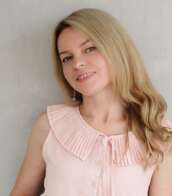 Shop Alferonok Victoria
Shop Alferonok Victoria

Victoria Alferonok
04.05.1977
Poland
Окончила художественно-графический факультет Витебского государственного университета им. П.М. Машерова в 1999г. В настоящее время занимаюсь живописью, иллюстрацией, декоративно-прикладным искусством (батик).

Artist shop
Alferonok Victoria
Poland
Number of products: 16
Сердоликовая бухта. Карадаг
Victoria Alferonok (b. 1977)  Shop Alferonok Victoria
Shop Alferonok Victoria

Victoria Alferonok
04.05.1977
Poland
Окончила художественно-графический факультет Витебского государственного университета им. П.М. Машерова в 1999г. В настоящее время занимаюсь живописью, иллюстрацией, декоративно-прикладным искусством (батик).

Artist shop
Alferonok Victoria
Poland
Number of products: 16
Мир изобилия
Tatiana Iurasova (b. 1983)  Shop Iurasova Tatiana
Shop Iurasova Tatiana

Tatiana Iurasova
19.06.1983
Russia
Меня зовут Татьяна Юрасова, я художник и создатель прекрасного. Я родом из Самары, выросла в этом городе. Моя живопись называется Atmosphere (Atm).
Когда я начала свой творческий путь, то стояла перед выбором, какой стиль живописи мне ближе. Что мне по душе реализм, где важно отточить мастерство передачи реального на холст, или мир фантазий, где наоборот художник может дать волю воображению и даже придумать как пойдёт линия или фигура, как будут сочетаться краски.
Я выбрала для себя мир творческих фантазий и пишу картины в стиле Абстракционизм, Фэнтази, fashion иллюстрации, скетчи. Моя живопись рассказывает о счастливой жизни, радости, красоте, роскоши, творчестве. Я пишу не просто картины, а привношу эмоции восторга в живопись. Картинами можно любоваться часами, ведь они не только украшают интерьер, но и дарят возможность почувствовать себя в мире фантазий, красоты, радости. А место где они находятся становится запоминающимся.
Вы можете увидеть мои акварельные работы, картины акрилом, маслом, темперой, с различными элементами декора: патали, пудры, втирок.

Artist shop
Iurasova Tatiana
Russia
Number of products: 16
Серия «4 стихии»
Sviatlana Vetrava (b. 1968) 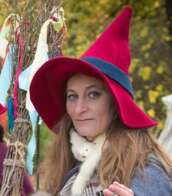 Shop Vetrava Sviatlana
Shop Vetrava Sviatlana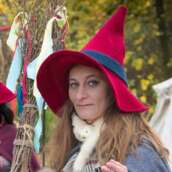

Sviatlana Vetrava
27.04.1968
Serbia
Exploring ethnography and mythology, I shape the patterns of an ethnic group. Drawing on the ancient wisdom of folk tales and contemporary scientific research in psychology, sociology, and philosophy, I seek mythological metaphors that reflect the relationship between humans and the external world. In their unity and opposition, I see both immense potential and limiting factors for the development of an individual personality.
Participating in narrative events as an archaic, demonized feminine entity—Yaga-Roga—I personally traverse the path of my hero, embracing them and transforming along with them. While remaining myself, I am transformed through the metamorphoses of your destinies.
My authorial universe is created through a multidisciplinary approach. I work in the technique of acrylic painting, enhancing it with elements of mixed media. By combining methods of grisaille and polychromy, abstraction and figurative art, ornamentation, and local color, I develop my own unique visual language.
The language of performance and happening helps me establish a personal connection with the audience, gain instant feedback, and make them co-participants in the creative process.
This is how I create my own myth, immersing the audience in which they can discover pathways to overcome complex life challenges.

Artist shop
Vetrava Sviatlana
Serbia
Number of products: 51
Аспекты
Sergey Minenkov (b. 1949)  Shop Minenkov Sergey
Shop Minenkov Sergey
Sergey Minenkov
02.11.1949
Russia
Художник широкого профиля (живопись, графика, фото, художественное проектирование - создание музейных и выставочных экспозиций - Москва, Париж, Амстердам). С начала 90-х годов основная деятельность - иконопись, проектирование иконостасов. параллельно с этим
создано множество небольших работ в авторском стиле и в авторской технике в основном сюрреалистического направления. в настоящее время работаю над творческим проектом "CIVILIZATION Z-A", включающего в себя несколько циклов. Несмотря на то, что написаны уже сотни икон для храмов в центре Москвы и в других регионах, несколько иконостасов в храмах в центре Москвы возведено по моим проектам, основные силы брошены на осуществление упомянутого творческого замысла. Единая композиция из шести картин под общим названием "АСПЕКТЫ" - первое,что хотелось бы выставить напоказ.
В настоящее время я выступаю под вывеской nonexistent artist SM.
Artist shop
Minenkov Sergey
Russia
Number of products: 8
«Баба на коне»
Sviatlana Vetrava (b. 1968)  Shop Vetrava Sviatlana
Shop Vetrava Sviatlana

Sviatlana Vetrava
27.04.1968
Serbia
Exploring ethnography and mythology, I shape the patterns of an ethnic group. Drawing on the ancient wisdom of folk tales and contemporary scientific research in psychology, sociology, and philosophy, I seek mythological metaphors that reflect the relationship between humans and the external world. In their unity and opposition, I see both immense potential and limiting factors for the development of an individual personality.
Participating in narrative events as an archaic, demonized feminine entity—Yaga-Roga—I personally traverse the path of my hero, embracing them and transforming along with them. While remaining myself, I am transformed through the metamorphoses of your destinies.
My authorial universe is created through a multidisciplinary approach. I work in the technique of acrylic painting, enhancing it with elements of mixed media. By combining methods of grisaille and polychromy, abstraction and figurative art, ornamentation, and local color, I develop my own unique visual language.
The language of performance and happening helps me establish a personal connection with the audience, gain instant feedback, and make them co-participants in the creative process.
This is how I create my own myth, immersing the audience in which they can discover pathways to overcome complex life challenges.

Artist shop
Vetrava Sviatlana
Serbia
Number of products: 51
Портрет Лопухиной
Irina Luneva (b. 1978)  Shop Luneva Irina
Shop Luneva Irina

Irina Luneva
30.01.1978
Russia
Владею техниками старых мастеров.
В 1992 Художественная школа 17
В 2010 закончила Училище Штиглица
2018 Мастер Классы Онищенко в Праге
Частное преподавание уроков живописи
Отреставрировала несколько икон
Разработка дизайн-проектов для нескольких квартир
Создала и отреставрировала предметы мебели.
Написала множество портретов на заказ
Создала арт объекты для оформления и дизайна помещений
Театральный Реквизит, оформление листовок для спектаклей, фото, промо- видео для танцевального театра Арт-Эстет
Помогаю студентам для поступления в Учебные художественные заведения
Две мои картины находится в частной коллекции в Праге
Недавно открыла магазин своих картин и продолжаю его развивать
Успешно закончила обувающую программу курсы повышения Высокого мастерства в живописи.

Artist shop
Luneva Irina
Russia
Number of products: 4
Солнце
Irina Zinik (b. 1972)  Shop Zinik Irina
Shop Zinik Irina

Irina Zinik
25.01.1972
Ukraine
Зиник Ирина Родилась в г. Красный Луч, Луганской области. Любила рисовать с детства.
Сегодня мои работы находятся в галереях г. Харьков, Львов, Черновцы, Ивано-Франковск, Мишкольц (Венгрия). частных коллекциях в более 50 городах Украины, в Молдове, Румынии, Польше, Венгрии, Германии, Австрии, Люксембурге, Италии, Франции, России, Америке и Канаде.
В 2012 году, уже состоялось четыре мои персональные выставки в технике ЭНКАУСТИКА в городах Северодонецк, Ново-Айдар, Красный Луч и Лисичанск! Участвовала в совместных выставках "Слобожанский Спас"- (г. Сватово) и Медовая выставка в г. Севастополь.
В 2013 году я успешно продолжаю выставочную деятельность. В марте, Городской Музей города Рубежное, радушно открыл двери посетителям, желающие увидели мои работы.
А с 18 июля по 3 августа 2013 состоялась 6-я персональная выставка в Городе Харьков в Художественной Галерее "Искусство Слобожанщины".И серия мастер-классов сопровождала эту выставку.
Моя 7 персональная выставка состоялась в городе Черновцы выставочный зал "Венисаж" с 30 октября по 15 ноября 2015 г.
8-я персональная выставка была в августе 2016 года в Черновцах, в Художественном музее. А так же совместная выставка с музеем г. Мишкольц, Венгрия.
9-я персональная - галерея "Бастион" в г. Ивано-Фанковск, 2018 г.
В 2017 и 2018 г.г. специальный гость фестиваля "ДеМед" г. Кременчуг. Представляла область на Форуме "Деловых и Профессиональных Женщин" в г. Полтава (2017), г. Киев (2018). Участница фестивалей и ярморки "Черновицкий Фортель" в г. Черновцы (2016-2018), г. Вена, Австрия (2018).
Многочисленные передачи на ТВ и радио в городах Северодонецк, Харьков, Кременчуг, Черновцы, Ивано-Франковск. Множество статей в прессе от Луганска до Закарпатья.
Живу и работаю в г. Черновцы, на Буковине.
И так, приготовьтесь попасть в удивительный мир - который называется ЭНКАУСТИКОЙ!

Artist shop
Zinik Irina
Ukraine
Number of products: 2
Не Ромашка
Irina Zinik (b. 1972)  Shop Zinik Irina
Shop Zinik Irina

Irina Zinik
25.01.1972
Ukraine
Зиник Ирина Родилась в г. Красный Луч, Луганской области. Любила рисовать с детства.
Сегодня мои работы находятся в галереях г. Харьков, Львов, Черновцы, Ивано-Франковск, Мишкольц (Венгрия). частных коллекциях в более 50 городах Украины, в Молдове, Румынии, Польше, Венгрии, Германии, Австрии, Люксембурге, Италии, Франции, России, Америке и Канаде.
В 2012 году, уже состоялось четыре мои персональные выставки в технике ЭНКАУСТИКА в городах Северодонецк, Ново-Айдар, Красный Луч и Лисичанск! Участвовала в совместных выставках "Слобожанский Спас"- (г. Сватово) и Медовая выставка в г. Севастополь.
В 2013 году я успешно продолжаю выставочную деятельность. В марте, Городской Музей города Рубежное, радушно открыл двери посетителям, желающие увидели мои работы.
А с 18 июля по 3 августа 2013 состоялась 6-я персональная выставка в Городе Харьков в Художественной Галерее "Искусство Слобожанщины".И серия мастер-классов сопровождала эту выставку.
Моя 7 персональная выставка состоялась в городе Черновцы выставочный зал "Венисаж" с 30 октября по 15 ноября 2015 г.
8-я персональная выставка была в августе 2016 года в Черновцах, в Художественном музее. А так же совместная выставка с музеем г. Мишкольц, Венгрия.
9-я персональная - галерея "Бастион" в г. Ивано-Фанковск, 2018 г.
В 2017 и 2018 г.г. специальный гость фестиваля "ДеМед" г. Кременчуг. Представляла область на Форуме "Деловых и Профессиональных Женщин" в г. Полтава (2017), г. Киев (2018). Участница фестивалей и ярморки "Черновицкий Фортель" в г. Черновцы (2016-2018), г. Вена, Австрия (2018).
Многочисленные передачи на ТВ и радио в городах Северодонецк, Харьков, Кременчуг, Черновцы, Ивано-Франковск. Множество статей в прессе от Луганска до Закарпатья.
Живу и работаю в г. Черновцы, на Буковине.
И так, приготовьтесь попасть в удивительный мир - который называется ЭНКАУСТИКОЙ!

Artist shop
Zinik Irina
Ukraine
Number of products: 2
Собачья верность
Iuliia Mkrtychian (b. 1987)  Shop Mkrtychian Iuliia
Shop Mkrtychian Iuliia

Iuliia Mkrtychian
12.12.1987
Russia
Художник от Бога - любитель. Победитель всероссийского дистанционного конкурса "Синяя Птица" в номинации "Изобразительное искусство" 29.12.2018 года, город Санкт-Петербург, название работы: "Путь к Богу".
Победитель двенадцатого всероссийского конкурса, проходящего в формате ФМВДК "ТАЛАНТЫ РОССИИ" за выполненную конкурсную работу в общей номинации "Изобразительное искусство" 07.01.2019 года (город Москва, название конкурсной работы: "Дом Пикассо".

Artist shop
Mkrtychian Iuliia
Russia
Number of products: 7
"VDali"
Iuliia Mkrtychian (b. 1987)  Shop Mkrtychian Iuliia
Shop Mkrtychian Iuliia

Iuliia Mkrtychian
12.12.1987
Russia
Художник от Бога - любитель. Победитель всероссийского дистанционного конкурса "Синяя Птица" в номинации "Изобразительное искусство" 29.12.2018 года, город Санкт-Петербург, название работы: "Путь к Богу".
Победитель двенадцатого всероссийского конкурса, проходящего в формате ФМВДК "ТАЛАНТЫ РОССИИ" за выполненную конкурсную работу в общей номинации "Изобразительное искусство" 07.01.2019 года (город Москва, название конкурсной работы: "Дом Пикассо".

Artist shop
Mkrtychian Iuliia
Russia
Number of products: 7


